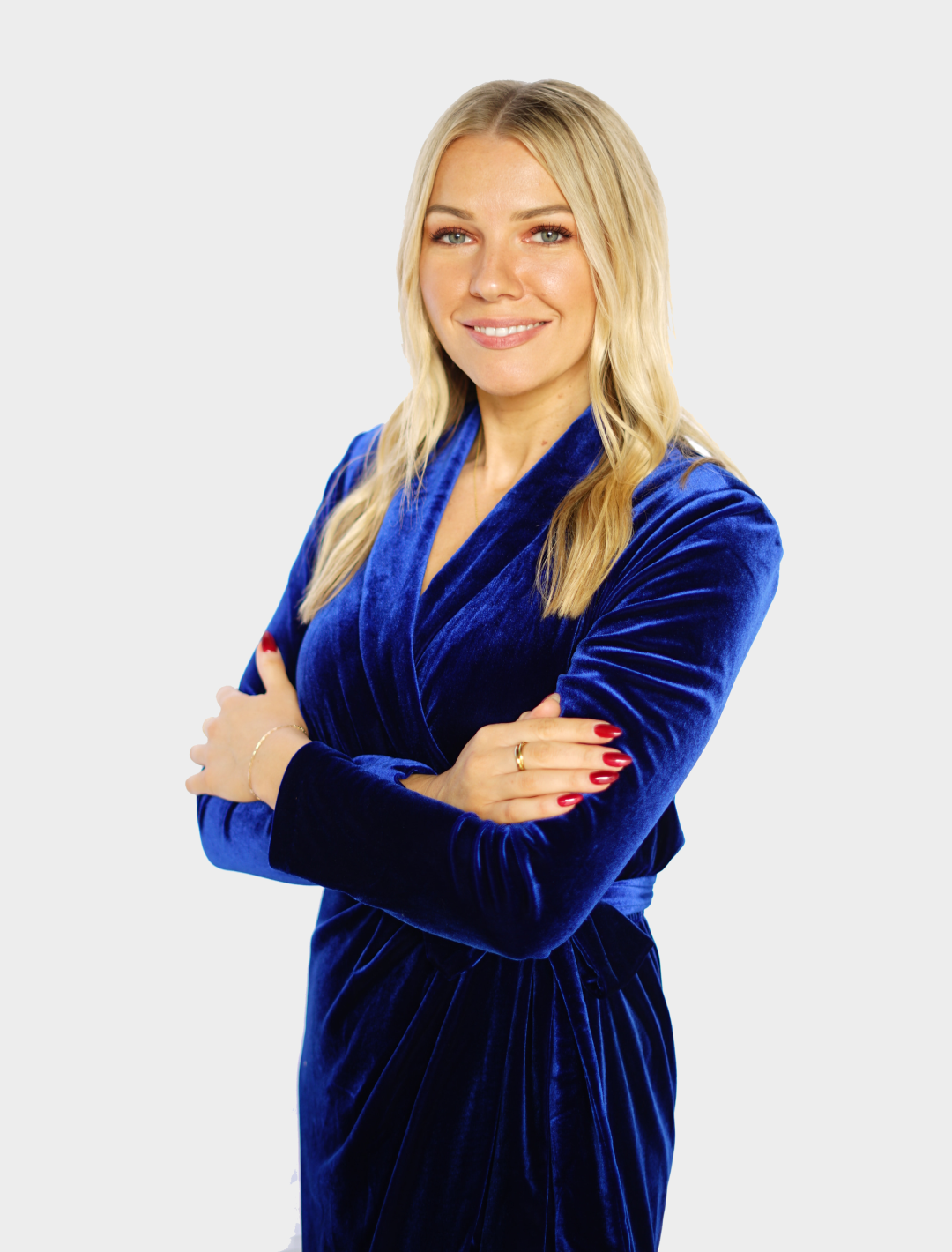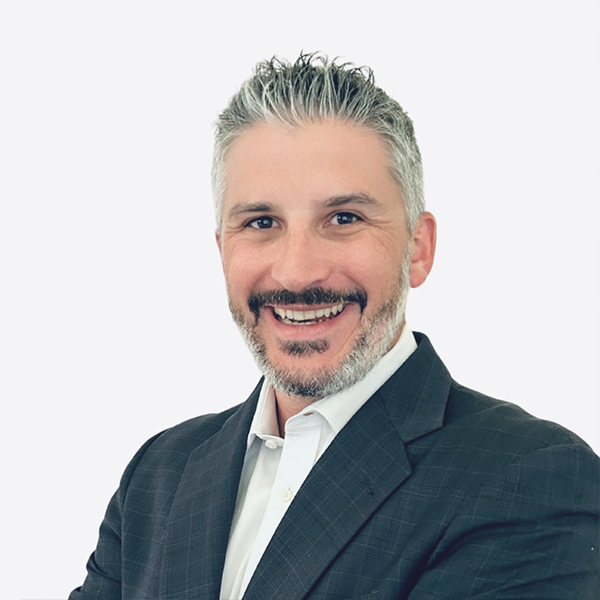Podcast Episode 114: Protecting Your Window, Part 1
EPISODE SUMMARY
In this episode of the Sound Financial Bites podcast, co-hosts Paul Adams and Cory Shepherd sit down to discuss how to make the wisest decisions towards long-term protection during your White Coat Window.
Paul and Cory talk about common mistakes they have observed in insurance structures, talk about the protective benefits of umbrella insurance, and provide a formula for determining how much umbrella insurance you need to design and build a good life.
WHAT WAS COVERED
- 2:02 – Protecting your window and reaching a work-optional lifestyle
- 2:58 – Overview of this episode
- 4:14 – The moat around the castle
- 5:35 – The first step to protecting your window: car and renters/home insurance
- 10:30 – Car rental insurance
- 10:55 – The two filters to think through car insurance
- 14:55 – Total liability limit
- 18:30 – Explaining umbrella policies
- 20:05 – How an umbrella policy saved an SFG client $200,000 in an insurance gap
- 21:00 – Homeowners! Watch out for these add-ons
- 21:48 – Current value versus replacement value
- 22:43 – How to substantiate your losses to an insurance company
- 24:02 – How much umbrella should you get?
- 25:46 – The benefits of a large umbrella
- 26:00 – How to measure your umbrella policy decisions
TWEETABLES
SHARE THE SHOW
Did you enjoy the show? We would love it if you subscribed today and left us a 5-star review!
Click this link – Sound Financial Bites
Click on the ‘Subscribe’ button below the artwork
Go to the ‘Ratings and Reviews’ section
Click on ‘Write a Review’
MUSIC CREDITS
“Legends Are Made” Copyright 2017. Music, arrangement and lyrics by Sam Tinnesz, Savage Youth Music Publishing SESAC and Matt Bronleewe, UNSECRET Songs SESAC
EPISODE TRANSCRIPT – FORMATTED PDF
EPISODE TRANSCRIPT – ORIGINAL TEXT
Cory Shepherd: Where we always start with every client, is where we’re gonna start here with all of you, and it’s surprisingly car and renters or home insurance. And it surprises a lot of folks that that’s where we start but think about this. If you’re a doctor, aside from what you do at work as a professional, which you have malpractice insurance for, what’s the greatest source of liability risk that you’re putting yourselves at every single day? It’s probably driving to the hospital.
Paul Adams: That’s right. Anywhere. To your kids’ school.
Cory Shepherd: Anywhere, just getting the car.
Paul Adams: Getting in the car.
Speaker Two: Welcome to Sound Financial Bites,where we help you
with bite sized pieces of financial and life knowledge to help you design and build a good life. The knowledge that has been shared from stages at conferences, pages of national business magazines, and clients living across America, our host Paul Adams now brings directly to you.
Cory Shepherd: Hello and welcome to another episode of Sound Financial Bites. I am Cory Shepherd, President of Sound Financial Group and co-host of this podcast, newly. I’m just so excited for this title, Paul. Thanks for sharing the title with me. I have CEO of Sound Financial Group and co-host and founder of Sound Financial Bites,Paul Adams.
Paul Adams: Hello, hello. So glad you all could be with us today. Number one, just for the record, it’s our Chief of Staff that keeps putting him on our little tiles as a special guest. We’ve called him co-host for a while. We’re gonna try to lobby Leah to no longer have you as a special guest. Otherwise –
Cory Shepherd: Obviously you probably didn’t ask her to change it. Like
we both keep forgetting I’m sure ’cause she would –
Paul Adams: I don’t know. I’m pretty sure I asked and she
vehemently said no. Anyway –
Cory Shepherd: We’re just asking for trouble, Leah … We’re checking to
see if she listens to these as she’s posting them.
Paul Adams: Yeah. We’ll see if we get some text messages if she was
reviewing all this before she sends it off to the production team.
Here’s what we’re talking about today. This season is all on the white coat window. So we’re glad you’re here with us, season four. This is episode 114 and what we’re gonna be talking about today is protecting your window. You see we talk about the white coat window being open. That period of time if you haven’t listened in earlier, when you start making much
more money, which could happen in a single year like it does to a physician. Or it may happen over a period of time for entrepreneurs and executives. But that income increase occurs and it’s super easy to just feel like it’s the same lifestyle you always had.
And so what we want you to be able to do is take advantage of this window to put yourself in the position that you don’t limp across the line to a work optional lifestyle in your old age, but rather you’re able to design and build the life that you want into the future with enough capital, freedom and autonomy around income, and choices in your old age. But today is gonna be the protection of that window. Or as we sometimes refer to, the moat around your castle.
Cory Shepherd: I like to think about it as, there’s lot of kids playing in the street, baseballs flying around. We don’t wanna crush your window.
Paul Adams: Yeah, that’s right. That’s right. Well in this case, what crashes through some people’s windows is a new Tesla, we’ll talk more about that.
Cory Shepherd: Yeah.
Paul Adams: But the things we’re gonna cover down on today are just some of the quick rules. We’re gonna be referring you back to some of our other podcasts where we cover how to set these up properly. We’re gonna give you some quick, back of the napkin stuff that you can launch on and do something about. You’re always welcome to download the transcript from this episode by going to soundfinancialbites.com. You can actually download the full transcription, blow by blow of what we said and that will give you the ability if you need to review these notes and/or, always go back and listen again. If you download us on podcasts or something like … What is the new one I just got? New podcast app. I love it because it speeds up podcasts in a different way.
Cory Shepherd: Oh.
Paul Adams: I will have-
Cory Shepherd: You haven’t told me about this. I’m glad we’re doing this or else I wouldn’t have heard it-
Paul Adams: Yeah. Well, I’ll get back to you guys on it, ’cause I can’t remember it right now, but as soon as I do, it’ll just randomly jump in, in the middle of our conversation.
Cory Shepherd: Perfect. Love it.
Paul Adams: But wherever you get your podcasts, you can go into the details, get some of these notes, or go to soundfinancialbites.com. With
that, what are the kinds of things that put protection around … Overcast is the name of the podcast app.
Cory Shepherd: Overcast.
Paul Adams: Overcast. What are the main protection points? Without getting into rules yet, Cory, what are the things that are the moat around people’s castle, the protection to their window?
Cory Shepherd: So we have things like life insurance and disability insurance, which I’m sure most doctors, for sure, have heard about in a presentation sometime in med school or a residency. Those shouldn’t surprise you. But things like legal documents and how you have your property titled. Huge. There’s something called umbrella insurance which almost no one has, before they meet us.
Paul Adams: Amazing how few people have it. If you’re a client of ours and you’re listening to this, there are a few people out there and I mean like one in seven will actually have personal umbrella policy. [inaudible 00:05:04] We’re gonna explain what it is and then give you some rules around it. And then stuff as simple as your car and homeowners insurance. Big deal. Or how you use your group benefits. All of those insurance or protection-based decisions are this moat.
Cory Shepherd: And the cash that you have in your bank account.
Paul Adams: Yes. Yeah. That’s where we’re gonna land today. So we’re gonna work through a bunch of that. We think we’re gonna have this split into two episodes, just to make sure we can take good care of all of you, but we’re watching the clock and we’ll see how we end up.
Cory Shepherd: So can I kick us off?
Paul Adams: Yeah.
Cory Shepherd: I’m excited about this one, because where we always start with every client is where we’re gonna start here with all of you and it’s surprisingly car and renters or home insurance. And it surprised a lot of folks that that’s where we start, but think about this. If you’re a doctor, aside from what you do at work, as a professional, which you have malpractice insurance for, what’s the greatest source of liability risk that you’re putting yourself at every single day? It’s probably driving to the hospital.
Paul Adams: That’s right. Or anywhere. To your kids’ school.
Cory Shepherd: I mean, anywhere. Just getting in the car.
Paul Adams: Getting in the car and I think it’s important that why talk about why people don’t talk about this. I just want you to imagine all of the radio shows having to do with money. Or all of the magazines having to do with
money. They’ve gotta all have something sensational, etc. If we had a radio show and somebody called in and said, “What should I do?” And they give some, “How much should I put in my 401K?” You know what we would be saying, “Well, what’s your car insurance look like? What’s your homeowners insurance look like?” It’d be a real boring radio show.
Cory Shepherd: Mm-hmm (affirmative).
Paul Adams: For that reason, nobody talks about this. Not to
mention the insurance companies are perfectly happy with you have little tiny deductibles, like $250 deductibles and a $30,000 liability. They will take that customer all day long, that is you paying more money and them giving you less coverage.
Cory Shepherd: Right. And let me make it non-boring and a little sensational for you. You’re driving home from a shift. You’ve still got your scrubs, maybe your lab coat on, definitely the thing that says doctor at the front of it and the person that you just rear-ended gets out of the car, sees that, and reaches for their neck.
Paul Adams: Yeah. They’re like-
Cory Shepherd: Oh, yeah, I have been-
Paul Adams: Oh, my neck hurts.
Cory Shepherd: Oh, that’s, you know …
Paul Adams: I think my gout is acting up. I’m pretty sure you
rear-ending me caused pink eye and-
Cory Shepherd: Yeah.
Paul Adams: And I could be losing my left eye over this pink eye.
Cory Shepherd: We are in litigious society that’s just … I don’t think it’s
very good, but that is the way that it is and that is a risk, because in our cultural mindset, you’re the rich doctor. Even if you don’t feel like that right now.
Paul Adams: And for our top income-earning executives, for our entrepreneurs, what do you think the first thing is anybody after an accident is gonna go do? They’re gonna go home and Google you. And like, “Oh, look at this guy own a company. They’re Cory, Dunn and Bradstreet’s got about 40 million dollars of revenue.” Or-
Cory Shepherd: And they wrote down the number of the attorney who
is on the billboard right underneath-
Paul Adams: Right.
Cory Shepherd: Where you hit each other.
Paul Adams: That’s right yeah. Or, you know, you’re a director at
Amazon. Like they got some idea of what kind of money you make given that kind of title with those kind of companies. Vice President’s on your card or on your LinkedIn. Like it is … We can’t hide anymore, so even if you live conservatively and you drive a very normal car, you could have huge liability standing out there.
Cory Shepherd: So starting rule of thumb is about as good for everyone whose thumb is exactly the same size as mine. So what we’re doing is giving you at least some starting points, some minimum, some guides. You may want to ask someone for more advice … Well, you definitely want to ask someone for more advice than this, but what we’re gonna tell you is probably moving the needle in a better direction than where it is now. So car and renters and home insurance. One thing you want to look at is your deductible at $500 or is your deductible where it was when you started college? I don’t … Can’t tell you how many people have exactly the same car insurance policy that they got when they got their first car, first had to leave their parents’ car insurance, usually at the beginning of college. You can probably handle a higher deductible than what you have now and we’ve found that a thousand dollar deductible is usually about the sweet spot of saving money on your insurance, so-
Paul Adams: Not to mention, think for most of you, you’re just driving along right now or you’re on a run, whatever you’re doing. If you backed into a post, like today, nobody’s hurt. It’s like $1200 worth of damage to your back bumper. Are you gonna report it to your insurance company? Probably not. And the reason you wouldn’t is you don’t want your rates going up. So if you just answered that the way I would anticipate most of you would, you are literally paying for a deductible right now that you won’t use. So if you’re paying for a deductible you’re not going to use, then you might as well raise it up to that thousand dollar level.
Cory Shepherd: Mm-hmm (affirmative).
Paul Adams: And we see that people have other things. We’re going
to try to give this to you as mechanics, not just this dollar amount, but we’re going to give you some mechanics to work off of. Your net worth and your income. But there are some things that people have on their car insurance that are costing them unnecessarily. Right before I hit these two points and before I get a bunch of hate mail from any of the property and casualty insurance people that listen to the podcast … I do wanna say that we will recommend people take a hard look at these, confirm what the coverages are with their car and homeowners insurance person. If they are what we say they are, then they may want to consider getting rid of them.
We’ll give you a couple of quick examples. One is: Your car rental insurance, which we see like, I don’t know, probably eight out of 10 times and the car rental insurance will say something like, “We’ll pay up to $25 a day for you to rent a car for a max of 20 days.” Now let’s think about that for a moment. That’s a $500 limit. So our rules should be, when we’re protecting ourselves, we should have two filters in a protection philosophy. That is, is this loss, if it happens, is it catastrophic? If it is, we should insure it. That’s step one. Step two is if it’s loss would be catastrophic, we should try to get as close to full replacement as possible.
So the question you have to ask yourself: Is a $500 rental car bill, even if you had to pay all of it out of pocket, is that catastrophic? Now I hope for you the answer is no. If it’s not no, then we need to do some other work on your balance sheet. Listen to the first 113 episodes of the podcast. Now …
Cory Shepherd: Small assignment.
Paul Adams: But that is a big deal. That rental insurance, it’s nice. I’ve had it in the past and so it feels fun that the rental company’s just paying for it, but if you don’t have it, most of you have a configuration in the family where you wouldn’t even have to rent a car, you could make the current cars work. There’s now Uber and Lyft, which didn’t exist like they used to. Many people work for home and then they go to the airport when they’re traveling. So for all of those reasons, it may not be required at all, if you just thought about it for a moment. What’s amazing is how much premium that costs given how small the benefit is. And you can see all of this by looking at something called your declarations pages in the car insurance.
The next one, I don’t know if you want to hit it, Cory, is the medical payments-
Cory Shepherd: Medical is my favorite. Oh, my gosh.
Paul Adams: By his favorite he means his favorite to not have people have anymore.
Cory Shepherd: To not have people have. So it pays for medical bills inside of your … So your policy has something that’s related to medical payments to others, medical bills for yourself, and it’s saying that we’ll pay up to X amount for those medical costs. But we all already usually have a kind of insurance that pays for our medical costs. What’s that called, Paul?
Paul Adams: I think it’s called medical insurance.
Cory Shepherd: Yeah, health insurance, right? Right? And there’s a thing called double indemnity, which means that you can’t get paid twice for
the same claim. So this is my favorite thing to have people ask their auto insurance person about.
Paul Adams: Oh, yeah.
Cory Shepherd: Is like-
Paul Adams: We need hidden cams on people when they ask this question, because I’m pretty sure the agent goes flush or turns red-
Cory Shepherd: Right.
Paul Adams: And you know shortly thereafter sends us emails that say not nice things about our moms.
Cory Shepherd: ‘Cause here’s what’s gonna happen. Your health insurance is gonna be primary on your medical expenses. So what this coverage is actually doing is insuring your health insurance company.
Paul Adams: That’s right, so if you had, say a $2000 deductible on your health insurance. You got in an accident and the medical payments on your coverage actually paid. Okay. So that’s the situation. You then also have a $10,000 medical payments on your car, with this total of $2000 deductible on your health insurance. And it’s your fault. So it’s nobody else is gonna come in and pay the bill. Your car insurance will reimburse you for your deductible, well, we already decided that wasn’t catastrophic or that wouldn’t have been the deductible you chose.
Cory Shepherd: You wouldn’t have had the deductible, right?
Paul Adams: Second: The other $8,000 can’t go to you. That actually has to go to your health insurance company. So we’re paying for car insurance to help protect our health insurance company. And you’ll notice this is another one that given the amount of likely benefit, the costs are higher than you would anticipate, especially … I can’t … Especially when families have like three, four cars. All of these … They just add it to everything.
Cory Shepherd: Stacks up, yeah.
Paul Adams: And you stack up and you’re like … Suddenly, like, wait, I’m paying $150 a year for rental car coverage on four cars to insure myself for $500. If it happens.
Cory Shepherd: It’s like why restaurants push desserts so hard because it’s a great profit booster for each table.
Paul Adams: Mm-hmm (affirmative).
Cory Shepherd: These little add-ons to the insurance policy add a nice little pop.
Paul Adams: Now let’s talk about how much your liability coverage should be. Now, so that we don’t have to go into as much detail and we keep ourselves on schedule for the podcast today, what I want you to think about is, you have a total liability limit. Now it’s oftentimes we see it as our car insurance limit or our home owners insurance limit.
Cory Shepherd: Should we bring an umbrella as part of this overall, too?
Paul Adams: Mm-hmm (affirmative).
Cory Shepherd: Is that where you’re going?
Paul Adams: Yep. Yep. Exactly right. So we’ve got … If you have, say, car insurance that gives you 100, 300 coverage. That’s pretty normal. That means if you get in an accident, it’s going to cover you 100,000 per person in the other vehicle, if it’s your fault. 300,000 per incident. And the way we like to explain it to people that means if you get in an accident with four other people and legit … This is not like frivolous. Legitimately the people are hurt. And they all win a judgment of $100,000. Your car insurance company will pay passenger number one $100,000, passenger number two $100,000, passenger number three $100,000, passenger number four gets your phone number and their attorney’s coming after you. And that is very, very real, depending on the state that you’re in. Your income could be attached for 20, 25, 30 years, based upon a lawsuit.
Now, the very same, again, I … We’re kind of … You’ll notice over time, Cory and I do … I keep saying tell one on our industry. I don’t know what it’s called when we tell lots of ones on our industry, but-
Cory Shepherd: Tell the truth about it’s actually like-
Paul Adams: Yes, we do. We do a little bit of the truth-telling.
Cory Shepherd: It’s over reality.
Paul Adams: Yeah. So if that’s the case and this case frustrate some of our property and casualty insurance friends, but it’s not uncommon that somebody’ll have like $100,000 per person liability on their home, but a $300,000 per incident coverage on their house. Well, think about it for a moment. Where are you most likely to have something go wrong? In your car, out on the road with a bunch of strangers, or people you willingly let in your home? Much more likely it’s gonna happen out on the road. Now, this is not what I recommend, but I do like to point out the ridiculity of it. If you have 100, 300 on your car, meaning $100,000 of liability per person in the other vehicle and you hit somebody in a crosswalk … Now they’re laying on the hood of your car, injured, probably a little upset.
While they’re still groggy from the initial impact, you may need to drive home as quickly as possible, slam on the brakes, and let them smash into your garage door. Not super hard, just enough to fling them off the car.
Cory Shepherd: You want to dent to garage door a little bit, as proof that the home caused the injury-
Paul Adams: That’s right.
Cory Shepherd: Yeah.
Paul Adams: That’s exactly right, because you’ve got $300,000 of liability on your home. Now of course nobody would ever do that, but then why in the world are the car insurance agents allowing people to have this differential between the coverage? Now we’re gonna go a little more after some of the sacred cows of our industry here. But one of the things that happened people don’t realize is that many property and casualty insurance agencies actually have profitability bonuses, meaning even down to the agent level and the companies teaching the agents have an interest in you having lower level liability limits. Because they’re perfectly fine if you have a $250 deductible paying a $2000 claim, because they’re just going to raise your rates later anyway.
What they don’t want are the things that happen where they lose really, really, really big lawsuits. For instance, one of the kind of urban legend that’s out there that you can actually see some things that happened was OJ Simpson and Bill Clinton were both insureds of the same company for liability and they both lost their civil cases.
Cory Shepherd: Ooh.
Paul Adams: $25 million paid out to the plaintiffs in both of those cases. And that particular insurance company stopped issuing any what’s called an umbrella policy. Picks up where your car and home leave off. $25 million in each of those cases. That company quit doing umbrella policies for like two and a half years, because they were just scared because they’re like, “We must have priced this all wrong.” Because those two lawsuits happened very close to each other. The umbrella policy picks up where the car and home leave off.
Cory Shepherd: So picture a giant umbrella hanging there, above your house and your car, parked out in the driveway. That’s a good picture of what umbrella really is doing for you. If you have 100,000 per person, 300,000 total per accident on your car and you get sued for more than that or there’s several people, like Paul’s example, that umbrella picks up where your car insurance leaves off. Comes in chunks of a million, generally, so a million’s a starting point
and you can add millions from there and it is the most inexpensive coverage per dollar that you can buy.
Paul Adams: Just about, yeah.
Cory Shepherd: Anywhere out there.
Paul Adams: And it gets less expensive per million, at least until you get over 10, and then it starts to have some increments of increase, due to the risk they know they’re taking. The key is if you just go to your car home owners insurance agent and said, “I need a … ” We’re just gonna talk about how to choose how much. We’d say, “I want a million dollar umbrella policy.” They will make sure, at least the liability limits. You’ve still gotta watch your deductibles and some of these add-ons coverages, but the liability limits on the car and home are high enough to allow for the umbrella to go into place. They usually won’t leave a gap. We always double check it for our clients, because we have seen some with a gap.
Once of my clients had a claim three weeks after we had him fix it. He had a home that was out of state and an umbrella policy that was handled by another agent, same company.
Cory Shepherd: Ooh.
Paul Adams: But there was a differential. So his homeowners insurance on that property went to 100,000. His umbrella said we pick up at 300 and above, because that’s what his other homes were.
Cory Shepherd: Oh.
Paul Adams: Now we fixed it. He called the agent. They fixed it. No kidding, like three weeks later, his horse stepped on a child’s chest. The child was fine ultimately. But he lost a lawsuit for $400,000. $400,000 lawsuit, which he would’ve been responsible for $200,000 of because of that gap. Now we’re gonna have to pick up the rest of our protection conversation in episode 115. But let me give you the mechanics, if I may.
How much umbrella should you get? Incidentally, do you wanna maybe touch on, right before we get to umbrella, the add-ons for homeowners to watch out for?
Cory Shepherd: Yeah. So you want to watch out for … Now that, of course, now that you’ve asked me-
Paul Adams: Now you’re blanking. Med pay. So we have med pay on the home owners.
Cory Shepherd: Oh, yeah, right. Just like on the car.
Paul Adams: Just like on the car. Again expensive, mostly unnecessary. Lower deductibles. And make sure you don’t have any like silly coverages in it that like you’ve got a watch insured that was a really expensive watch to you back in the day, because it was $2000, but now you’ve got it itemized on your homeowners insurance. You’re paying extra premium for it, totally unnecessarily because you don’t worry about a $2000 watch anymore.
Cory Shepherd: Right.
Paul Adams: With your current income and net worth.
Cory Shepherd: Now I was only thinking about the things that you do want, like replacement value on your home.
Paul Adams: Oh, yes. I totally left that out. Photographs. Would you touch on that?
Cory Shepherd: Yeah. So there’s two kinds of coverages on your home insurance or renters when you’re talking about your stuff and that is current value or replacement value. Current value pays whatever the, like, whatever the sell at a garage sale value would be on the thing right now and replacement value is what it would cost to go buy the new thing. Now, Paul-
Paul Adams: Be sure to have replacement value.
Cory Shepherd: Right. Because your house burns down, everything in it, along with your refrigerator. Your refrigerator was eight years old. Are you gonna go walking around at flea markets and used appliance stores … I don’t even know if that exists, like …
Paul Adams: You want a used mattress for your bed?
Cory Shepherd: Right. Used eight year old mattress for your bed, no. You’re gonna buy a new refrigerator, a new mattress, that costs more than what it currently is valued. So you want replacement value. Now you’ve got to be able to substantiate to the insurance company what your loss was. They want some kind of record. Easiest way to do it now that everyone has some kind of video camera walking around in their pocket in their phone is do it yourself or if you have kids that are just old enough to do that, great job to make them earn their supper that day. Turn on that video camera, walk around the house. Just high level narration. Opening all the closet doors, the drawers, and just say, “Here’s what this is, here’s what this is, here’s what this is.” Get it on camera and make sure that’s stored up in the cloud.
Paul Adams: If you’re a client of ours, you can put it in our encrypted vault we give you.
Cory Shepherd: Mm-hmm (affirmative).
Paul Adams: But otherwise, just get it on a jump drive. Give it to your close friends. Definitely introduce them to the podcast, have them subscribe, do a review. Remember, if you give us an honest review, we’re gonna make sure that you get a copy of Michael Michalowicz’s Clockwork or whatever book we’re giving away at the time. Give us an honest review, take a screenshot of it, email it to [email protected]. Umbrella. So it’s landed on umbrella. And then we’re gonna pick up in our next episode about disability insurance, life insurance, how to structure your wills and trust so that for those of you that are going through this white coat window, you’re going through it as an entrepreneur, an executive, or a physician, where you’ve got a jump in income that’s occurred either instantly or it’s occurred over a period of years or you’re a lottery winner, which could be an actual lottery or just stock options for a very successful company. Any of those things are your window. Now the decisions really matter for the next six months to a year.
Umbrella policy is going to not just pay the liability you could otherwise be responsible for. It’s also going to keep the insurance company’s attention. Let me explain why that’s important. If you get in that car accident and you’ve got $200,000 of lawsuit against you, it’s a policy that’s big enough, like it’s a hundred, 300 policy, but they know for sure they’re losing the lawsuit, the insurance company, and you’re gonna be liable for the other 100? What attorney do they send?
Cory Shepherd: The newest one they just hired.
Paul Adams: The newest one. Yeah. Just out of law school.
Cory Shepherd: Here, do this.
Paul Adams: Hey, we’ll give him a shot. Because they know they’re not getting out of their 100,000. Now, legally, are they supposed to do this? No. Practically, I don’t know how you’d prevent it. Let’s do the flip side. You’ve got a five million dollar umbrella policy and somebody sues you for, even if it’s the full five million, that insurance company has some significant incentive to send the best possible law team to negotiate it below the limit they have, so that you’re not the only one in the courtroom worried about defending yourself. Not to mention that they also write a much bigger check and it actually puts the plaintiff’s attorney, that’s right, you’re on the defense. Puts the plaintiff’s attorney on your side. Let me explain why.
When the plaintiff’s attorney gets a judgment, wins on their client’s behalf, so often in personal injury, they’re paid on contingency. Well, the insurance company will literally split the money in trust, super easy, certain amount to the plaintiff, a certain amount to the plaintiff’s attorney. It’s done right now shortly after the judgment most of the time. Whereas if they
have to come after you, which is called uncapping the umbrella, they just sign themselves up for years and years and years and years of work to follow up to get it from you personally. Get you to either foreclose or force the sale of your home. Cause you to liquidate investments. It’s all a lot more work. By having a large umbrella, it puts you in the position that the plaintiff’s attorney is gonna work to settle it for what the insurance company does, not go after you personally.
So how much does it need to be to make sure they don’t want to come after you personally? It should be 110% of your net worth or 250% of your income. That will usually make sure that the umbrella policy keeps their attention. Now it’s whichever of those two are higher, so said differently, 10% more than your net worth or two and a half times your gross household income.
So that’s it for part one of protecting your white coat window. We’re really looking forward to you guys being able to come back, join us for part two of this, listen with us through all of season four and it’s mine and Cory’s hope-
Cory Shepherd: And mine. My pleasure. I meant pleasure, you said hope.
Paul Adams: Well, it’s Cory’s pleasure to be here and it’s my hope that this has contributed to you being able to design and build a good life.
Speaker Two: I want to acknowledge you for taking the time to tune in to Sound Financial Bites.You stopped long enough in your busy day to reflect on your finances and your future, to help you design and build a good life.
———————————————————————————————————————————
This Material is Intended for General Public Use. By providing this material, we are not undertaking to provide investment advice for any specific individual or situation, or to otherwise act in a fiduciary capacity. Please contact one of our financial professionals for guidance and information specific to your individual situation.
Sound Financial Inc. dba Sound Financial Group is a registered investment adviser. Information presented is for educational purposes only and does not intend to make an offer or solicitation for the sale or purchase of any specific securities, investments, or investment strategies. Investments involve risk and, unless otherwise stated, are not guaranteed. Be sure to first consult with a qualified financial adviser and/or tax professional before implementing any strategy discussed herein. Past performance is not indicative of future performance. Insurance products and services are offered and sold through Sound Financial Inc. dba Sound Financial Group and individually licensed and appointed agents in all appropriate jurisdictions.
This podcast is meant for general informational purposes and is not to be construed as tax, legal, or investment advice. You should consult a financial professional regarding your individual situation. Guest speakers are not affiliated with Sound Financial Inc. dba Sound Financial Group unless otherwise stated, and their opinions are their own. Opinions, estimates, forecasts, and statements of financial market trends are based on current market conditions and are subject to change without notice. Past performance is not a guarantee of future results.
Each week, the Your Business Your Wealth podcast helps you Design and Build a Good Life™. No one has a Good Life by default, only by design. Visit us here for more details:
yourbusinessyourwealth.com
© 2019 Sound Financial Inc. yourbusinessyourwealth.com
PRODUCTION CREDITS
Podcast production and marketing by FullCast
Recorded using Switcher Studio: [email protected]










